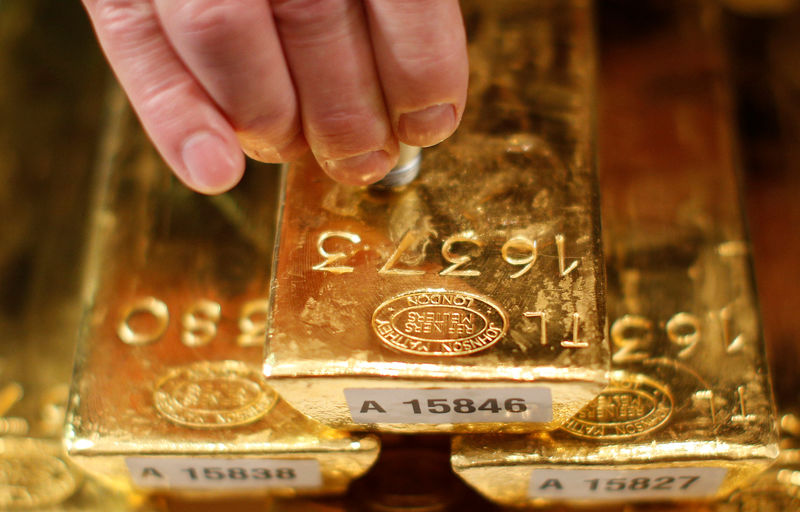Investing.com — Gold prices rose Wednesday, supported by a weaker dollar and the prospect of higher U.S. trade tariffs fueling geopolitical tensions.
rose 0.2% to $2,637.99 per ounce, while the February term rose 0.6% to $2,662.89 per ounce at 3:14 PM ET (2014 GMT).
Dollar falls based on in-line inflation data; Trump threatens more trade tariffs
Wednesday’s lower data showed that the key PCE price index, the Fed’s inflation measure, met expectations in October, leaving the prospect of another rate cut next month on the table.
The dollar’s downside comes even as newly elected US President Donald Trump threatened to impose additional trade tariffs on China, Canada and Mexico when he comes to power, increasing concerns of a renewed trade war between the world’s largest economies .
Analysts warned that any high rates could undermine global economic growth and also push up U.S. inflation, offering a better longer-term outlook for rates.
Demand for gold as a safe haven was also hampered by US President Joe Biden announcing a ceasefire deal between Israel and Hezbollah, heralding a de-escalation of the conflict in the Middle East.
Other precious metals were marginally positive on Wednesday. fell 0.9% to $30.547 per ounce, while it rose 0.4% to $933.20 per ounce.
Among industrial metals, the benchmark on the London Metal Exchange rose 0.6% to $9,023.00 a tonne, while the benchmark expiring in February rose 0.7% to $4.1467 a pound.
Trump policies to limit appetite for gold – BofA
Trump’s economic policies, which are expected to lead to higher U.S. growth and a stronger dollar, could limit investors’ appetite for gold, Bank of America analysts warned in a recent note.
Trump is expected to implement more corporate tax cuts and economic expansion policies in his second term, supporting growth but also driving up inflation.
This trend is expected to keep US interest rates relatively high in the long term, supporting dollar and government bond yields while limiting demand for gold.
Precious metals, especially gold, saw steep losses through November following Trump’s election victory at the beginning of the month.
Industrial metal prices were pressured by the prospect of greater US hawkishness towards China, a major importer of copper and other base metals.
(Peter Nurse, Ambar Warrick contributed to this article)


